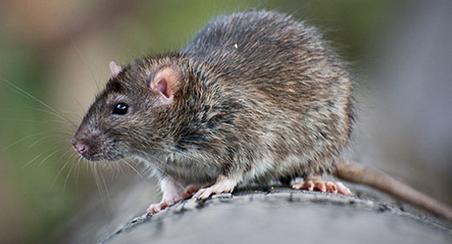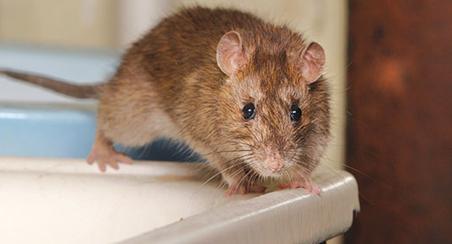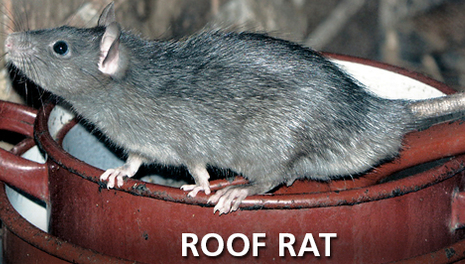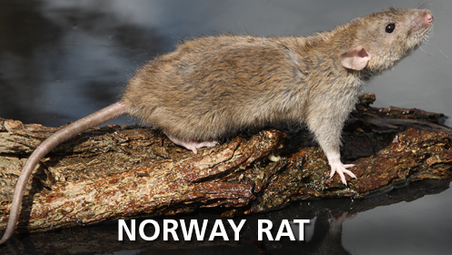
Rat Identification

What’s a Rat?
Rats are long-tailed rodents.
An adult rat can squeeze through a quarter size hole.



Roof Rat
Roof Rats are also known as black rats. The Roof rat is distinguished by its larger ears, pointed nose, a tail that is longer than the body, and an average body weight of 6-12 ounces. Their color varies from black to brownish-gray, with their underside being gray to white. The tail is hairless and longer than the head and body usually from 7 1/2 to 10 inches long.
Roof rats nest in trees (especially palms), ivy, and ground cover, and also in upper portions of buildings. Most of their activity is at night when they typically explore covering 100 to 300 feet. They are omnivores. Their food sources consist of snails, fruits, grains, vegetables, nuts and seeds, pet food and items from unsealed garbage containers, and just about anything left over from humans. Rats usually consume 1/2 to 1 ounce of food daily, and drink up to 1 ounce of water daily. Roof rats also have an acute sense of smell are best suited for tropical and semitropical zones.
Life Cycle
The female roof rat reaches sexual maturity at three months of age. They are in heat approximately every 4-5 days. The gestation period is 21 to 23 days, with each litter being 5-8 pups. After giving birth the female is capable of being in heat again in 24 to 48 hours, so many generations can be produced each year.

Norway Rat
The Norway rat is also known as the brown rat or sewer rat. They are not from Norway but were first identified there. They are found along building foundations, under rubbish or woodpiles, in gardens and fields.
Norway rats are often completely black. They can also be grayish-brown, but the color may vary from a pure gray to a blackish- or reddish-brown. The underside is usually gray to yellow-white. The body is heavy and thick, from 7 to 10 inches long. They weigh between 12 to 24 ounces. Their tail is shorter than the head and body usually about 6 to 8 1/2 inches long. The tail is dark on top with a lighter underside.
Norway rats are able to gnaw through wood, lead, aluminum, copper, even cinder block and uncured concrete. They burrow extensively in soil and are excellent swimmers and good climbers. They usually nest in the basements and lower portions of buildings. Norway rats are nocturnal with most of their activity and feeding takes place between a half-hour after sunset and a half-hour before sunrise. They are omnivores that eat just about anything, but they prefer meats, fish, flour, cereal grains, fruits and vegetables. They consume 3/4 to 1 ounce of food each day and require water daily to survive, from 1/2 to 1 ounce of water every day.
Life Cycle
Norway rats will become sexually mature in 3-5 months of age. The females create a nest in secluded places when inside a building, or in burrows or tunnels when outside. There can be from four to seven litters each year, with up to a dozen young in each litter, so the population can grow quite rapidly. Adults only live from 9-12 months.
What kind of Rodent is it?
There are many kinds of rodents you may find on your property. Some common rodents are rats, mice, voles, gophers, squirrels and skunks. We can help you identify what has invaded your space.

Mouse transmitted disease
The following are transmitted by Mice:
 800-901-1102
800-901-1102